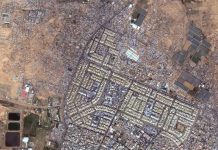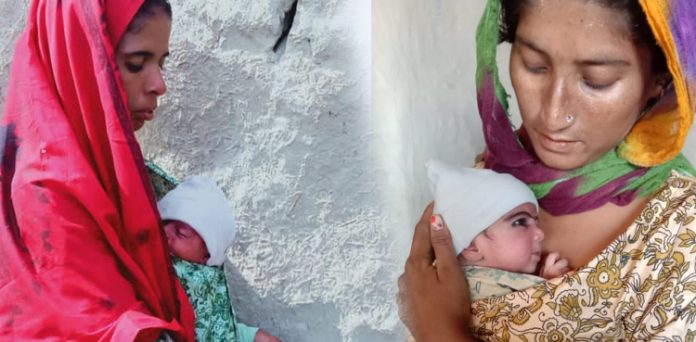Kangaroo Mother Care or Kangaroo Care is the practice of holding a newborn skin-to-skin for an extended period of time for a number of health and survival outcomes.
Since 2011, the International Kangaroo Care Awareness Day is celebrated globally on May 15 in various communities across the world to promote and appreciate parents, organizations, and professionals who support kangaroo care. Kangaroo care or kangaroo mother care (KMC) is the practice of providing continuous skin-to-skin contact between the mother and her baby from birth, establish exclusive breastfeeding, and early discharge from hospital to help mother and baby to quickly settle into the space at home.
KMC can successfully help in saving very low birth weight babies and is an cost effective, simple yet an important intervention for care of premature babies by the World Health Organization (WHO, 2018).
Preterm births are a vulnerable population that require special care to support their survival. If not managed adequately, preterm births can result in mortality and morbidity with lifelong implications.
Unfortunately, preterm care is expensive and requires big investments in equipment and human resources. KMC is an intervention that can reduce the cost of pre term care and is safe and effective technique as stated by Charpak and other researchers. Several Randomized clinical trials have shown that KMC implementation can decrease morbidity and mortality in preterm and vulnerable low birthweigh.
KMC or skin-to-skin care is a therapeutic technique where usually preterm infant is held skin-to-skin with an adult. A small preterm baby is unable to regulate its temperature, resulting in “hypothermia” which is a serious condition that can result in mortality.
KMC helps in regulating body temperature, increase baby’s weight by enhancing breast milk intake, regulates the heartbeat and breathing and reduces apnea. As the mom and the baby are in close contact and most of the day, they are together, it develops bonding and improves neurodevelopment outcomes in infants The duration of KMC can vary from continuous to intermittent care, depending upon the mother and the baby’s condition.
It can vary from an hour to almost 24 hours in a day. Fathers or other care givers can also provide skin-skin care. KMC advocates exclusive breastfeeding, hence, it is mostly mothers that give kangaroo care, however, the support from other family members is vital to care for both the mother and the child reported by HNN in 2018.
In 1978, two doctors in Bogota, Columbia proposed kangaroo care. They noticed the cramped hospitals and thus the limitations for the mother to develop a caring relationship with the infant. Once the infant was stable and not in need of neonatal medical interventions, the infant could be discharged early and receive skin-to-skin contact time with the mother and family members. Mothers and caregivers were effective “incubators” for the newborns, providing warmth and nutrition. The skin-to-skin contact is discontinued ,when the infant indicates fussiness or discomfort.
The infants are preferably breastfed, and, if incapable of suckling at the mother’s breast, they are provided with Expressed breast milk and in special cases special formula may be supplemented. KMC is a technique that requires a lot of support and education for the mother and the family to care for the newborn and help the baby thrive. The five critical requirements of KMC as per one of the publications by Oxford University Press are:
- Information and support to mothers including consent, family support, and follow-up after discharge from the hospital
- Training of health personnel
- Techniques of skin-to-skin contact and thermal control
- Exclusive breastfeeding
- Discharge from hospital when the infant is able to feed adequately and gain weight; stability of body temperature in kangaroo position, and; adequate follow-up.
Pakistan has one of the highest preterm births globally. The prevalence of preterm birth was found to be high in Pakistan with several modifiable and controllable risk factors.
Despite WHO recommendations and proven effectiveness of KMC, its utilization in Pakistan is negligible. Literature suggests that the non-compliance of KMC can be explained by various socio-cultural norms, household work responsibilities on mother and privacy. Hence to scale up KMC in Pakistan we recommend following:
- Training of all maternal and newborn healthcare providers on KMC is essential. KMC should be included as an important topic in medical, nursing curricula and LHV, LHW program.
- Hospitals must include KMC in its policies making it an absolute necessity to teach and demonstrate KMC to parents and skin-skin to contact should be initiated immediately after birth in the labour rooms.
- Fathers specifically in Pakistan are not involved in newborn care and are less likely to be involved in KMC. However, support from community and family members especially fathers is considered as one of the enablers for KMC implementation, in low and middle-income countries (Jamali et al., 2019). Mothers not only take care of newborn but are responsible for house chores sparing less time to practice KMC.
- Advocacy for Kangaroo mother care at hospital and in community is essential for scale up. It should be part of antenatal programs. Involvement of family and family centered KMC will be beneficial in our society ,where extended families play a big role in care provision.
- Awareness campaigns using radio, television and other social media platforms, using key influencers as brand ambassadors for the campaign to implement KMC will foster in acceptance of KMC in society at large.
- Identification and use of both male and female community champions, and generating peer group with parents who had successfully practiced KMC with their newborn can help in compliance and sustainability of KMC.
Authors claim no conflict of interest. The views and descriptions do not project GVS or institutional viewpoints are literal in context to advocate for KMC.
Shabina Ariff and Saleema Khowaja from Agha Khan University are co-authors of this blog





























